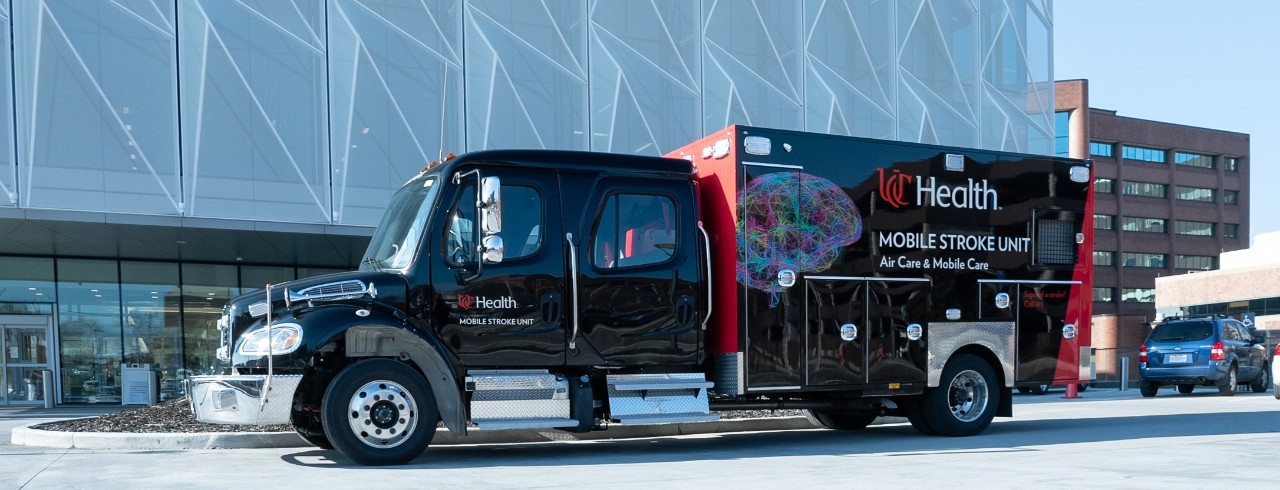
Local 12: Mobile stroke unit sees success
When a patient is having a stroke, every second counts. Since August 2020, the UC Health mobile stroke unit has been bringing emergency department-level care directly to patients.
The specially designed ambulance is outfitted with a number of tools including a CT scanner, clot-busting medication and an iPad to consult in real time with a doctor reading the scans.
"We have had many patients who have been treated in the back who have really gone from a severe stroke syndrome -- really not moving half of their body -- to getting some movement back by the time they got to the emergency department, and by the time they were discharged home, they were fully functional," Christopher T. Richards, MD, told Local 12.
Remember how to identify a stroke
Because of the quick onset of stroke, it is important to know the FAST mnemonic device that details the most common signs of stroke and how to respond:
- F: Facial drooping
- A: Arm or leg drop, or weakness in the arm or leg
- S: Speech issues, such as slurred speech or an inability to get your words out
- T: Time is of the essence; call 911 immediately
Richards, assistant professor in the University of Cincinnati's Department of Emergency Medicine in the College of Medicine, medical director of the UC Health Mobile Stroke Unit and a UC Health emergency physician, said the mobile stroke unit has been dispatched more than 1,100 times, transported nearly 300 patients to the hospital and administered clot-busting medication to 29 people.
"The quicker that we can have the CAT scan and have that medication administered, those patients really do better," he said. "And we’re showing that across the board. Everyone else who's had a mobile stroke unit experience -- that time is significantly improved when patients are treated in the back of a mobile stroke unit.”
Featured photo at top of UC Health's mobile stroke unit courtesy of UC Health.
Related Stories
Supporters give generously to the Bearcats Pantry and Resource Center
December 22, 2025
Supporters gave generously to the Bearcats Pantry and Resource at the University of Cincinnati during two fundraisers: the Crosstown Foodout and Giving Tuesday.
Fusion reactors may be key to uncovering dark matter
December 22, 2025
Yahoo! News highlights a new study by University of Cincinnati physicist Jure Zupan that explains how fusion reactors might create subatomic particles associated with dark matter.
Challenges for veterans in the workforce
December 22, 2025
A new research review examines how veterans and their families impact the economy.
